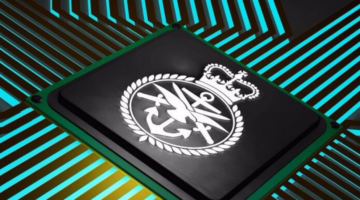
On 22nd November 2021 the Strategic Command Strategy was released. This sets out how Strategic Command will transform the way defence works and the plans for integration in the future.
The vision set out in the strategy is to be “the driving force behind integration and the enabling foundation for Defence’s enhanced global posture”. With this, the Critical Capabilities of the Command that they intend to transform to accelerate Defence’s ability to respond to changing threats and deliver Command’s strategic outcomes are listed below:
- Authority
- People
- Data
- Technology
Authority
Defence’s senior leadership is championing integration and agility as a matter of routine, making best use of optimised evidence, analysis, structures, and processes to deliver UK authorities to effect positive change across the organisation.
A key activity identified here is the implementation of Multi-Domain Integration Change Programme, by moving beyond the traditional three domains of Maritime, Air and Land to the increased integration of the five domains of Maritime, Air, Land, Space, and Cyber & electro-magnetic activity.
People
To achieve the Strategic Outcomes, the strategy recognises that there needs to be a diverse, inclusive, and skilled workforce educated, equipped, and inspired to deliver swiftly in an integrated way.
Success will be achieved by implementing a culture of integration by default, supported by an increased ability to recruit, retain and talent manage specialist cadres across domains, using Unified Career Management (UCM) to ensure increased integration.
Data
This will be achieved by timely, accurate and trustworthy data being acquired, utilised, and managed by subject matter experts. Data will be made accessible to relevant partners through established authoritative data sources and will be owned and managed by organisations capable of producing and maintaining data management needs.
Technology
The Integrated Review set out the Government’s ambition to sustain strategic advantage through S&T to keep pace with the rapid advancement of technology. This will be achieved by facilitating an improved relationship with industry which leverages the most relevant private sector technologies, allowing the Command to adopt new technologies at pace.
Strategic Outcomes
Identified as the most important tasks for the Command, as set out in the “Defence in a Competitive Age” Command Paper, the Strategic Outcomes are listed below:
- Integrated Capabilities
- Orchestrated Activity and Effects
- Improved Understanding
- Enhanced Global Reach
- Disruptive Capabilities
Implementation of Defence & Security Industrial Strategy (DSIS)
The strategy outlined the intention for Defence to “work seamlessly together with other government departments and our allies and partners overseas” that supports the move towards a deeper, more sophisticated, and strategic relationship between government and industry highlighted in the DSIS.
By implementing the DSIS and making strategic investments in R&D, the Strategic Command aims to “enhance capabilities, contribute to the broader economy and help create or sustain sovereign industries that are essential to the UK’s long-term strategic advantage”.





